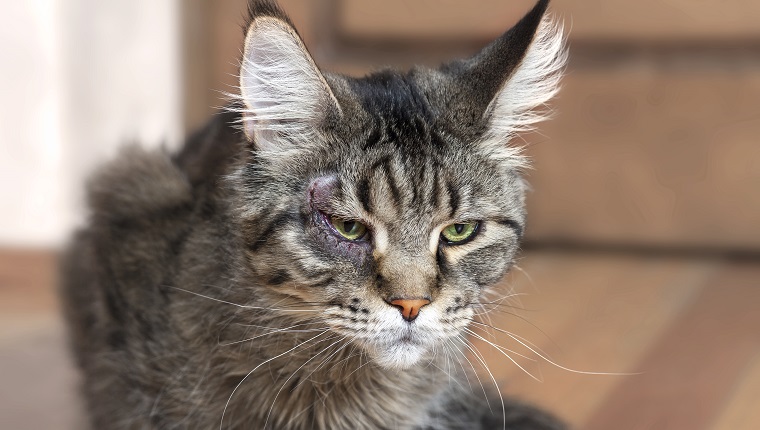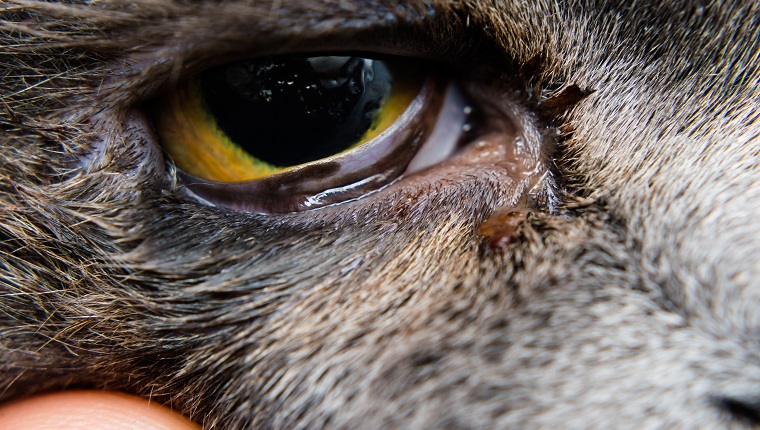Entropion in cats is a condition where part of the eyelid begins to turn inwards towards the eyeball. It can result in irritation, infection, and even scratches on the eye’s cornea.
Left untreated, it can lead to problems with the cat’s vision. While this is an uncommon condition, it does seem to affect certain breeds of cats, including Persians, more frequently than others.
If you see signs that your cat might be suffering from eye issues, then you must consult your veterinarian for a proper diagnosis and course of treatment. Here’s what you should know about the symptoms, causes, and treatments of entropion in cats.
Symptoms Of Entropion In Cats
Entropion in cats can lead to a number of symptoms that affect the eyeball.
Some of the most common symptoms include:
- Redness around the eye
- Inflammation of the eye
- Discharge from the eye
- Sagging skin around the eye
Causes Of Entropion In Cats

The main cause of entropion in cats concerns the shape of a cat’s face. Genetically, cats known as brachycephalic breeds, which feature shorter noses, are more likely to develop entropion.
Some of the breeds who are genetically affected the most by entropion include:
In some instances, cats who suffer from conjunctivitis are also more likely to suffer from entropion.
Treatments For Entropion In Cats
If you suspect that your cat might be developing entropion, your veterinarian will want to examine your feline’s eyes. Your vet will also ask questions about your cat’s medical history and attempt to figure out if any underlying conditions, such as conjunctivitis or feline herpes, might be causing the issue.
Veterinarians often prescribe artificial tears as a way to keep the eye lubricated. In some circumstances, antibiotic ointments can also help. As ever, if your veterinarian prescribes a course of medicine for your cat, then you must follow the precise dosage and frequency instructions and complete the full course of medicine.
Vets often use surgery to treat cases of entropion in cats. This procedure involves moving the eyelid either inwards or outwards.
In all cases, it’s important to schedule regular follow up visits with your vet to ensure that treatment is working safely.
Have you ever had a cat who developed entropion? Did your vet perform surgery on your cat’s eyelid? Then tell us all about it in the comments below.










